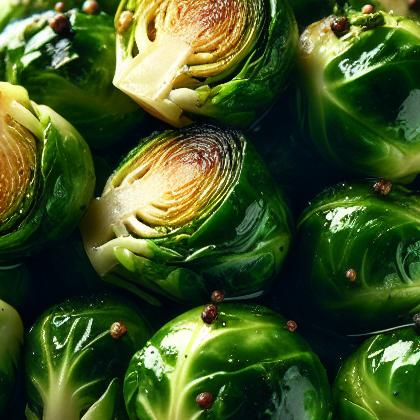Showing results for 'Brussels Sprouts'
close
Brussels Sprouts

The Brussels sprout is a cultivar in the Gemmifera group of cabbages (Brassica oleracea), grown for its edible buds. The leafy green vegetables are typically 2.5–4 cm (0.98–1.6 in) in diameter and look like miniature cabbages. The Brussels sprout has long been popular in Brussels, Belgium, and may have originated there.
Brussels Sprouts Pairs With:
Food Item
Flavor Affinity Level

Did you know there are 82 food flavor pairings in my database for Brussels Sprouts available. What you are seeing above is a random list of 30 items which pair with Brussels Sprouts.
For the entire list, beautifully formatted, enter your email address and click the download button below, then I'll email it to you as a PDF.
Brussels Sprouts Properties:
| Food Property | Type | Description |
|---|---|---|
| Flavor Profile | Bitter | Brussels sprouts have a slightly bitter taste due to compounds like glucosinolates. |
| Umami | Brussels sprouts have a subtle umami flavor, especially when roasted or sautéed. | |
| Texture | Firmness | Brussels sprouts have a firm texture when cooked properly, with a slight crunch. |
| Nutritional Value | Macronutrients | Brussels sprouts are low in calories and carbohydrates, but high in fiber, vitamins C and K, and antioxidants. |
| Micronutrients | Brussels sprouts are a good source of minerals like potassium and folate. | |
| Fiber | Brussels sprouts are high in fiber, which helps with digestion and promotes satiety. | |
| Color | Natural Pigments | Brussels sprouts have a vibrant green color due to the presence of chlorophyll. |
| Aroma | Volatile Compounds | Brussels sprouts have a strong sulfuric smell when overcooked, but can be mild and pleasant when cooked correctly. |
| Chemical Composition | Acidity/Alkalinity (pH) | Brussels sprouts are slightly alkaline with a pH ranging from 6.0-7.5. |
| Cooking Behavior | Heat Conductivity | Brussels sprouts cook quickly and evenly due to their small size and dense texture. |
Food Pairing App - Version 1.2.0
